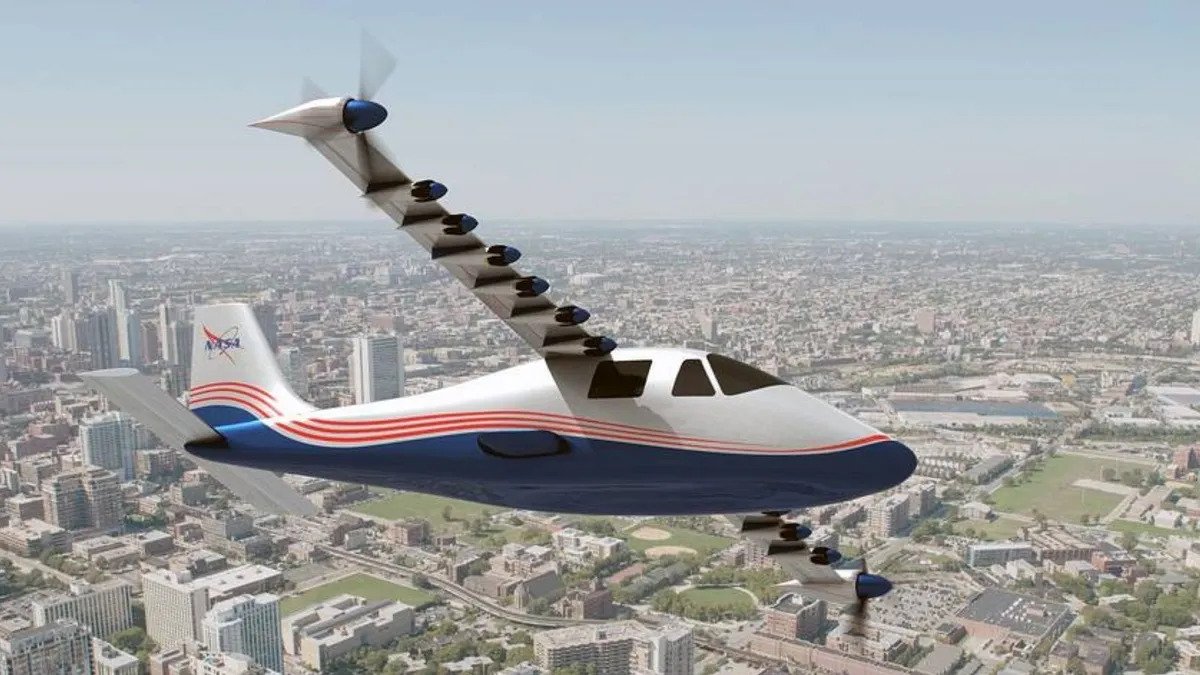Nasa’s new electric plane can propel a zero-emission future
Source: https://interestingengineering.com/transportation/x-57-nasa-electric-plane
Finding an alternative to aviation fuels, such as kerosene, will be key if we want to continue flying. The X-57 uses lithium batteries to run electric motors for its propellers. But the energy you get from batteries, relative to their weight, is 50 times less than you can get from aviation fuel. The X-57 is a modified, four-seater, Italian-built Tecnam P2006T aircraft. It relies on a combination of lots of propellers, small motors, and many batteries spread out across an aircraft, known as “distributed propulsion”. This approach represents an exciting research and development area found in many experimental electric aircraft designs. What’s different about the X-57 is that the wings are completely redesigned with propellers positioned to optimize airflow around them. When a propeller is not needed, its blades can be folded back to reduce drag. Propeller technology generally is having a rebirth. Designs are becoming not just more efficient, but also less noisy and more affordable. The speed and pitch angle of propellers can even be changed during flight to adapt to the different aircraft speeds required for takeoff, landing, and cruising. Air density changes with altitude and affects the thrust you get from a propeller. Now that we can make propellers that work effectively at all altitudes and speeds, we can really get the most out of the energy stored in the batteries. New designs, such as the first-ever 11-bladed propeller (on the Piper Cheyenne plane), can achieve very high thrust even at high air density.

